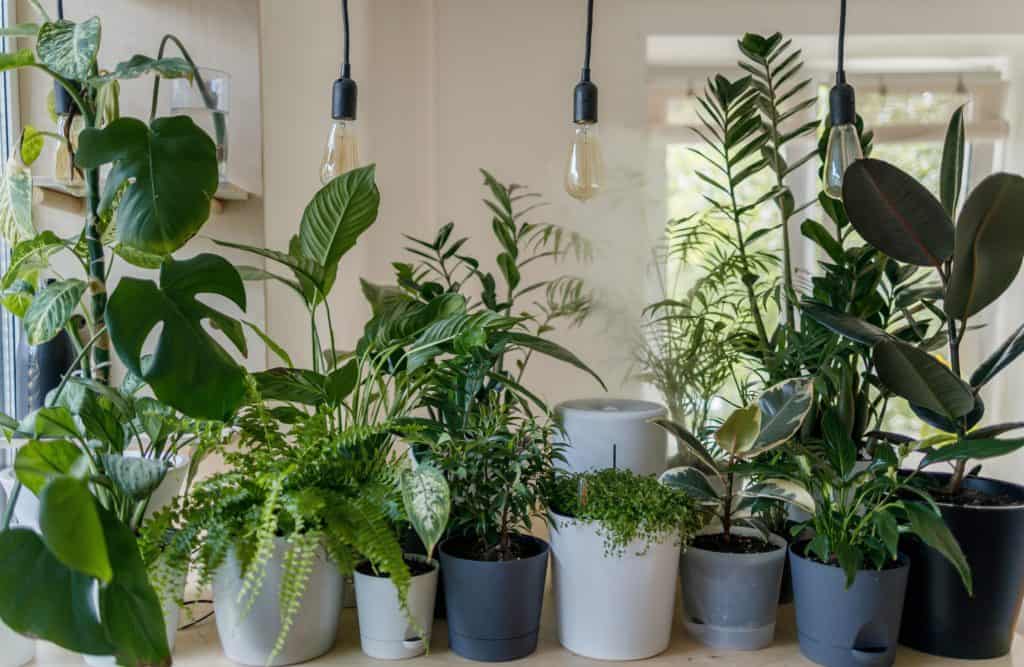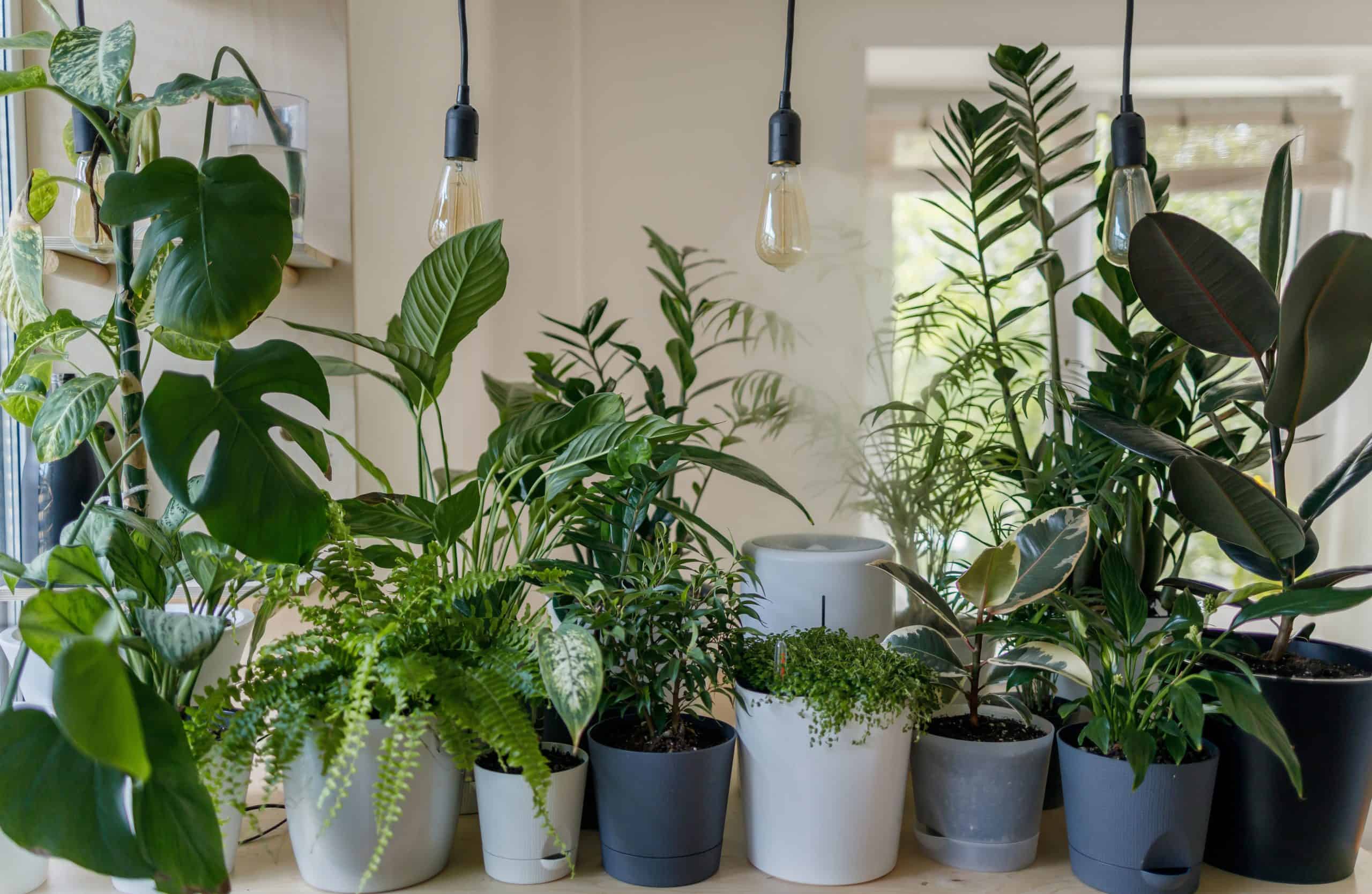How to Pack Plants for Moving

Plan Ahead. The best way to ensure your houseplants arrive safely when you move to a new place is planning ahead. Packing and moving your entire houseplant collection can seem like a daunting task at first; However, if you follow these steps, your plants will arrive safely.
Safely Transport Your Houseplants on Moving Day
- Wrap all pots (small, medium and large) in plastic bags to prevent the soil from spilling inside your vehicle during the move. Wet soil can be tricky to remove from carpeting.
- Place small and medium sized houseplants packed tightly together or separately in sturdy boxes to prevent falling over. Keep the boxes open to give the plants some fresh air.
- Large plants will be fine if you don’t have a box, however, extra protection around the plant may be necessary depending on how far you are travelling.
- Place your plant boxes in the trunk of your car, or on the floor in the backseat. Make sure nothing heavy is on your backseat, as it could roll onto your plants and cause damage.
- Once you arrive, unpack your plants and place them in a safe place. Remove the plastic bags, and make sure they have access to sunlight and add water as needed.
Prior to Moving day:
You’ll want to start preparing at least one week early to avoid the stress of packing all your plants on moving day. Plan ahead and give yourself some extra time, you’ll thank yourself later and your plants will be better off for it.
- Remove dead leaves and scrape off any pests.
- Water all your plants a few days before you move so they are moist enough to survive the journey, but not so wet they are dripping all over you.
- Lighten your load by switching your plants to plastic pots instead of ceramic.
- Pack up your ceramic pots safely in a box or container so they are not damaged. Use newspaper or plastic bags wrapped around each pot so it is protected from damage.
- Some plants may be too big to carry or may be unsuitable in the climate of your new home. Consider gifting these plants to your friends who are staying behind – this way, you know it has gone to a good home.
- Check out state guidelines before bringing your plants. Some plants are not allowed in certain areas. Find out about your area here: PLANT PROTECTION LAWS AND REGULATIONS
How to Wrap Your Houseplant Pots for Transport:
Houseplants can be very delicate and are prone to damage if they are not wrapped before transporting. As a lifetime gardener I know how important these plants are to you. Some of these plants will have a sentimental place for you and your family, so make sure you follow these steps below to ensure the welfare of your plants is maintained during your move.
- Take a single plastic bag and slide one open edge under the bottom of your plant pot.
- Pull the bag up firmly so that the pot is now centered in the bottom of the bag.
- Leave the bag open and untied for most small plants to allow the plant to breath during the trip.
- For larger plants (like trees), tie a bag around the base of the trunk so it does not fall off during transport.
- Use paper, or bubble wrap, to fill the gaps between your plants to give them extra protection while you are on the road. There is nothing worse than breaking a bunch of your favorite pots – using this technique will help reduce jostling and broken limbs.
- For cuttings, wrap in a damp paper towel and store in sealed container.
Choose the Right Vehicle to Transport Your Plants:
Arranging your plant transportation before moving day is essential to making sure everything goes smoothly and all your houseplants arrive with their limbs intact. Choosing the right vehicle for transport is an important thing to consider whether you are moving across town or to a whole new country.
By Car:
- Clear the trunk and backseat of any debris so you can easily fit all your plants.
- Ensure your car has enough fuel to reach your destination.
- Confirm an exact time with your driver to avoid any delays.
- Make sure the car has enough room to fit all your plants, you may need to make more than one trip.
- Make sure the driver knows how to get to your new place.
Truck / Moving Van Rental:
- Remember to reserve the vehicle before moving day.
- Is your license up-to-date? (Yes, they will check this).
- Do you have a credit card? (You’ll need one to rent the vehicle).
- Make sure you comfortable driving one of these large vehicles.
How to Travel Long-Distance with Houseplants:
- Check on your plants periodically during your trip, too much heat or sun can stress on your plants. Moving to a new place is stressful for plants as well as humans!
- Add water if your plants are drying out, or adjust their sunlight to make sure they arrive in good condition.
- Make sure the plants you are transporting are not forbidden in the place you are moving to. Otherwise, they may be confiscated at border crossings if you haven’t done your research.
- If the plants appears wilted, try moving them to a different spot in your car where they will have more airflow.
Moving to Canada with Houseplants:
Bringing foreign plants into another country can have devastating effects on its ecosystem. There are strict laws in Canada which you must adhere to before you being allowed to enter the country with your houseplants. Without the required documents, your plants will not be allowed to enter Canada.
- If travelling from the continental US you can bring in up to 50 houseplants for personal use, a Phytosanitary Certificate may be required for plants that are considered high risk.
- Here is a List of plants that can be brought into Canada other than the continental US.
- All plants must be declared prior to entering Canada with a permit form.
- Here are the Eligible and non-eligible plants when moving in to Canada.
- Some plants may require certificates from the country of origin, if you are unsure about an of your plants, simply ask a border officer and they will be able to help.
Sending Your Houseplants by Mail/Post:
You can also ship your plants to yourself and meet them at your new place its actually very easy to do. This will cost extra though and the plants safety is not guaranteed. You’ll want to follow these additional tips to ensure your plants have the best chance of arrive intact.
- Wrap each pot in plastic and tie around the base of the plant securely.
- Seal the interior of the box with extra tape so it does not leak water or soil.
- Poke air holes in the box so your plants can breathe.
- Fill the interior of the box with newspaper or bubble wrap in case your plants experience a bumpy ride.
- Write on the side of the box exterior “LIVE PLANT – THIS END UP” in large letters. This will encourage the delivery person to use extra care when handling your package.
- You can send by USPS / FEDEX / UPS etc. but be sure to check out each companies guidelines before you choose which one you are going to send your plants in the mail with.
- Check your state guidelines before shipping
When You Arrive at Your New Home: (Guide to Unpacking Houseplants)
Unpack your plants immediately when you arrive, it should be one of your top priorities. Just like your family and your pets they will likely need food, water, fresh air and to stretch their limbs. Now the fun part begins! You get to arrange and display your plants in their new home. Follow these houseplant unpacking tips upon arriving at your new home.
- Check your plants moisture levels and give water as needed.
- Inspect your plants for any damage, pests or lost soil that may have occurred during the trip and repair/remove/replace as necessary.
- Choose a fresh new spot for each of your plants that gives your plants the sunlight they require so they begin to adjust to their new surroundings.
- Repot any plants into their original pots as soon as you are able. This will help the plants feel at home and will be more likely to return to their original luster much quicker.
Once You Have Settled Into Your New Home:
Get to know the local nurseries and garden centers in your new area, you’ll want to know the closest places to go so you can get supplies, tools and new plants of course! And don’t forget to go for a walk in the parks and trails to check out your new local flora. There are lots of plants outdoors that can easily be turned into houseplants if you have a few extra pots kicking around in your gardening supplies. All you need to do is take a cutting. Never dig up plants in the wild as this could hurt the local ecosystem.

